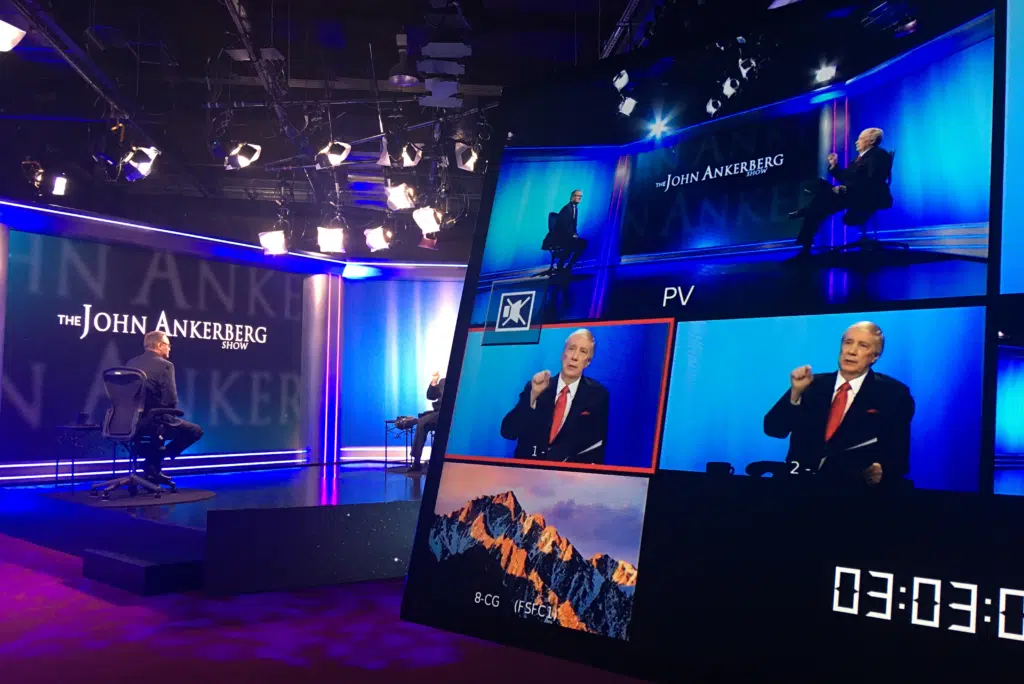Muhammad—The Prophet of Islam

The continual use of Muhammad’s name among Muslims indicates their deep respect and reverence for him. Whether it’s spoken by worshipers in mosques, uttered by those in need, whispered by the sick and dying, or even invoked by soldiers in moments of danger, his name carries significant weight in all aspects of Muslim life. It extends beyond public displays of faith; even in the intimate moments of motherhood, Muhammad’s name finds its place as mothers lull their infants into peaceful slumber by repeating his name. Symbolizing a deeper spiritual connection, it’s not uncommon to see his name inscribed on the doorposts of Muslim households, signifying his sanctity within their homes. Among Muslims, Muhammad’s name is sacred.[1]
Allah Has Sent Many Prophets
According to the Quran, Allah has sent a prophet to each generation to reveal the existence of one God.[2] Islamic tradition claims that a staggering 124,000 prophets have been sent to humanity. Each prophet’s divine message is said to be tailored to the era in which he lives. Each time a new scripture is bestowed upon a revered prophet, it supersedes previous revelations. Thus, the revelation given to Muhammad eclipses all previous revelations, including those in the Bible. While previous prophets delivered messages relevant to their times, Muhammad’s revelation is supposedly timeless.[3]
Muslims claim that all prophets ordained by Allah delivered a unified message—affirming the existence of a single deity (Allah), advocating obedience to His law, and emphasizing the need for righteous deeds in anticipation of the Day of Judgment.[4] Apparent discrepancies between the prophets are attributed to humanity’s misinterpretation of the fundamentally harmonious teachings they set forth. Muslims also claim that the teachings of Jesus, as presented in the New Testament, have been severely distorted. The original teachings of Jesus are believed to be perfectly congruent with Muhammad’s.
Muhammad’s Culture
Before Muhammad came into the world, the Quraysh clan had claimed dominion over Mecca, transforming a desolate valley into a bustling center of activity. Thriving on trade, the Quraysh quickly became a formidable force among tribal societies. Membership in such a tribe offered security, as the collective would retaliate fiercely against any harm done to its members by outsiders. This fear of retribution acted as a powerful deterrent against wrongdoing throughout Arabia.[5]
Muhammad’s early environment was steeped in polytheism, where belief in multiple deities prevailed. Animistic traditions further permeated the culture, with spirits, demons, and celestial powers believed to inhabit various natural elements such as rocks, streams, and trees, and all of them demanded appeasement.[6]
Muhammad’s Upbringing
Muhammad was born in Mecca in 570 A.D. The death of his father left him in the care of his influential Quraysh lineage. The loss of his mother at the tender age of six placed him under the guardianship of his grandfather and later his uncle, Abu Talib.
According to the teachings of the Quran, Muhammad’s upbringing was marked by hardship, as described in Surah 93:6f. At first, he adhered to the prevailing religious beliefs of his community. In time, however, he became dissatisfied with the polytheistic and animistic beliefs prevalent in Meccan society. The worship of 360 gods and idols within the walls of the Ka’ba troubled him deeply.
Muhammad’s Career in Commerce
In his youth, Muhammad was of average height, with dark curls framing his face and prominent eyebrows. Accounts describe him as having large features—head, hands, and feet—and a telltale vein that pulsed on his forehead in moments of anger.[7] He exuded neatness, kindness, and an astute understanding of people, balanced by a streak of sensuality and a capacity for cruelty toward adversaries.[8]
Transitioning into adulthood, Muhammad apprenticed under the tutelage of Khadija, a prosperous widow, as a camel attendant. Demonstrating integrity and reliability, he swiftly ascended to manage her expansive trade ventures, supervising caravans across vast distances.
His trading endeavors took him on extensive journeys as far as Syria and possibly Egypt, exposing him to diverse cultures and faiths.[9] He encountered Christians, Jews, and perhaps Zoroastrians along the trade routes he traveled for the next 15 years. At the same time, he keenly observed the moral decay within Mecca.[10] One idea that seems to have stuck with him from his encounters with these three religions is their common teaching that there will be a Judgment Day when the righteous will be rewarded, and the wicked will be punished and tormented in hell. This teaching would become a central tenet of Islam.
Muhammad most likely encountered Christians and Jews in Mecca as a result of merchants and caravans coming to the city to do business. Unfortunately, historical evidence suggests that a particular form of unorthodox Christianity known as Nestorianism was the form of Christianity that Muhammad was exposed to during these years. Muhammad’s subsequent teachings that Jesus was only a man and a prophet of God, and not God, the Son of God, a Savior, or a Redeemer, demonstrate the influence of Nestorianism on Muhammad. Muhammad’s religious ideas gradually took shape during this period.
His exemplary service to Khadija led to their marriage, despite their considerable age difference. Freed from financial worries by Khadija’s wealth, Muhammad devoted himself entirely to spiritual pursuits, indulging in periods of contemplation and meditation. Their union, rooted in mutual respect and affection, gave Muhammad stability and support.[11]
Khadija’s background in Ebionite Christianity, which emphasized the humanity of Jesus and denied his deity, further influenced Muhammad’s evolving beliefs.[12] Rejecting traditional Christian notions of Jesus’ divinity and redemptive mission, Muhammad’s theology reflected an amalgam of diverse religious influences encountered during his formative years.
“Gabriel” Appears to Muhammad
In ancient times, those inclined toward spirituality often sought seclusion, retreating annually to caves for introspection. Muhammad followed this tradition, spending years in solitude in the caves of Mount Hira.
While immersed in meditation, Muhammad was startled by the sudden appearance of an angel who identified himself as “Gabriel.” He commanded Muhammad to “recite” in the name of God. At first, Muhammad hesitated, but when Gabriel repeated the command, he seized Muhammad’s throat.[13] Only after being strangled into obedience did Muhammad begin to recite the revelations given to him.
After this encounter, Muhammad’s mind was clouded with doubt, and he feared that evil spirits had taken possession of him. However, when he confided in Khadija, he found comfort in her assurance of the divine origin of the revelations.
The nature of these revelations sparked understandable concern. Muhammad received them in an altered state of consciousness, his body succumbing to ecstatic seizures.[14] Such episodes left him contorted, sweating profusely, hearing phantom bells, collapsing to the ground, foaming at the mouth, and uttering primal screams.[15]
After months of introspection, Muhammad embraced his role as a prophet of Allah. He saw himself as a messenger of the same God revered by Christians and Jews, entrusted with restoring His message to its original purity. Moreover, Muhammad believed his revelations superseded those of previous prophets and offered the ultimate and complete understanding of Allah’s will.
As Allah’s chosen messenger, Muhammad was charged with reciting the complete and final revelations delivered through Gabriel.[16] These divine messages spanned decades and were later compiled into the Quran, Islam’s holy scripture.
The Quran, often hailed as “Muhammad’s miracle,” holds particular significance due to Muhammad’s purported lack of formal education and literacy. He was known as the “unlettered prophet.”
Central to Muhammad’s revelations was the proclamation of Allah as the sole deity and his appointment as the messenger of Allah. He denounced the local deities of Mecca as false, advocated strict monotheism, and emphasized humanity’s duty to submit to Allah.
According to Muslim tradition, Muhammad’s revelations were accompanied by miracles. These allegedly included feeding multitudes with meager provisions, restoring sight to the blind, healing the sick, raising the dead, and causing barren lands to flourish.[17]
Mecca’s Resistance to Muhammad
Initially, Muhammad garnered scant followers. Over a span of three years following his divine calling, a mere 13 individuals, among them his spouse Khadija and a handful of intimate companions, embraced his teachings. This number gradually grew to about 40 followers, mainly from the less affluent segments of society.
The affluent segments disdained Muhammad’s message, perceiving it as a threat to their commercial ventures. Mecca’s economic vitality depended heavily on the influx of pilgrims who worshiped the 360 idols enshrined in the Ka’ba.[18] To label these deities as “false,” as Muhammad proclaimed, risked a steep decline in pilgrimages, spelling economic disaster for the city’s merchants. Consequently, Muhammad found little favor among the business elite.
Faced with persecution from these quarters, Muhammad drew parallels between his tribulations and those of Moses and Jesus, strengthening his conviction that he was a true prophet of God. During this time, his wife Khadija and uncle Abu Talib wielded considerable influence, protecting him from harm.
Tragedy struck in 619 A.D. with the death of both Khadija and Abu Talib. Muhammad, deprived of his clan’s shield after Abu Talib’s death, found himself vulnerable, and life became harsh for his Muslim followers.
Muhammad Relocates
After Abu Talib’s death, chieftains of various Meccan tribes swore to eliminate Muhammad. Muhammad was alerted to the conspiracy, allegedly by a revelation from Gabriel, and then fled with 150 loyalists to Yathrib, 280 miles north of Mecca, on September 25, 622 A.D. This departure, called the Hijra, meaning “emigration,” marked the beginning of the Muslim calendar, designating 622 as its inaugural year, and heralded the official dawn of Islam.[19]
The inhabitants of Yathrib, notably abundant in monotheistic Jews, harbored a receptivity to monotheism unlike their Meccan counterparts, a quality that undoubtedly appealed to Muhammad. Muhammad quickly adapted to his prophetic duties in the new location, demonstrated skillful leadership, and quickly attracted a substantial Muslim following. Establishing a quasi-theocratic government, he seamlessly blended the political and religious spheres, rising to both royal and prophetic stature. In homage to his influence, Yathrib was renamed Medina—“City of the Prophet.”[20]
However, Muhammad’s ambitions suffered setbacks. Anticipating recognition by Jews and Christians as a prophet of God, Muhammad first directed prayer toward Jerusalem, guided by divine revelation. His disillusionment when both groups spurned him led to a drastic change in attitude. Subsequently, by an alleged divine decree from Allah, the focus of prayer shifted to Mecca, symbolizing Muhammad’s departure from the Judeo-Christian tradition and the emerging independence of Islam.[21]
Noteworthy is the evolution of Quranic references to Christians and Jews. Initially such references were cordial (Suras 2:62; 2:256), but they later took on a much more adversarial tone (Suras 9:5,29).
Although things began well for the most part in Medina, life eventually became difficult for those who migrated from Mecca because they had no money or valuables. They were about to exhaust the goodwill of the people of Medina. Muhammad promptly received a revelation from Allah that allowed his followers to raid caravans on their way to Mecca, where his enemies lived (Sura 9:74). By raiding caravans bound for Mecca, he would greatly help himself and his followers while dealing a blow to his enemies.
Muhammad’s movement took on a militant religious character, indoctrinating his followers with zeal and promising immediate paradise for those who perished in the cause of Allah. Material incentives also abounded: the spoils of caravan raids were divided among Muhammad’s men, and he kept one-fifth. Not unexpectedly, these caravan raids led to war with the Meccans.
Simultaneously, in the decade following Khadija’s demise, Muhammad had eleven more marriages, noteworthy given the Quranic limitation of four wives (Sura 4:3). Revered in Muslim tradition for his virility (Hadith 1:268), Muhammad’s betrothal to a six-year-old, consummated when she was nine, drew widespread criticism for its impropriety.[22]
Muhammad Overruns Mecca
In 628 A.D., a pact was made between the Mecca-based Quraysh tribe and Muhammad, committing them to a decade of peace without warfare. This agreement, however, went beyond a mere cessation of hostilities; it granted Muhammad and his followers the right to make pilgrimages to Mecca. However, the integrity of the agreement was tested just two years later, in January of 630, when a Meccan citizen murdered a Muslim. In response, Muhammad, marshaling an impressive force of 10,000, violated the treaty and launched a massive assault on Mecca.
The surrender of Meccan leaders was swift and offered minimal resistance, facilitating Muhammad’s rapid takeover of the city. Upon entering the city, his first act was to destroy the idols housed in the Ka’ba. Muhammad then extended an amnesty offer to his former adversaries in Mecca, later granting them a generous pardon.
With Mecca now firmly under his control, Muhammad transformed the Ka’ba into a focal point for religious pilgrimage, solidifying its place in the burgeoning Islamic faith.
Muhammad’s Death
In 632 A.D., Muhammad’s unexpected death sent shockwaves through his nascent empire, a mere blink of an eye after his triumphant conquest of Mecca. His passing sparked a contentious struggle for succession, a dilemma exacerbated by his failure to name a successor.
One faction, the forerunners of Sunni Islam, argued that leadership should be determined by an electoral process, with caliphs (“delegates”) acting as representatives of the faith. Amid this turmoil, Abu Bakr, entrusted by Muhammad to lead prayers in his absence, rose to power by consensus of the majority and became the first caliph.
Muslims today hold Muhammad as the pinnacle of prophethood. They cite his exemplary life and character as evidence. They also point to the exponential spread of Islam around the world as a divine endorsement of Muhammad and his teachings.
A Christian Assessment
From a biblical perspective, it’s crucial that messages delivered by a new “prophet” be consistent with those of previous prophets, provided those prophets were authentic representatives of the one true God. This principle is clearly expressed in the words of the apostle Paul, who sternly warned: “Even if we or an angel from heaven should preach to you a gospel contrary to the one we preached to you, let him be accursed” (Galatians 1:8). Any teaching that contradicts established divine doctrine is considered unacceptable, even anathema.
The Bereans understood the importance of ensuring that any new claims of truth be tested against the established truths of Scripture. When Paul spoke in Berea, they meticulously tested his teachings against the backdrop of the Old Testament Scriptures (Acts 17:11).
Since Muhammad’s revelations contradict those of the biblical prophets, especially concerning such essential doctrines as the nature of God, Jesus Christ, and the gospel of salvation, they cannot be considered authentic revelations of the one true God. Instead, Muhammad falls into the category of a false prophet (Matthew 24:24-25).
Deviant View of Christianity
Muhammad’s understanding of Christian doctrine was riddled with inaccuracies. During his formative years, he interacted primarily with Nestorian and Ebionite Christians, both of whom held deviant views of Jesus Christ that were considered heretical by mainstream Christianity. Moreover, Muhammad’s understanding of Christianity was entirely oral, lacking any personal study of the Christian scriptures. There was no Arabic translation of the New Testament during his time;[23] it didn’t appear until around 720 A.D., about a century after Muhammad.[24] Consequently, Muhammad’s insights into Christianity were gleaned solely from conversational exchanges during his travels. Most of these exchanges, unbeknownst to him, were rife with heresy.
Muhammad’s Moral Failure
Muslims maintain that Muhammad is the ultimate prophet, citing his life and character as evidence. However, examining the historical record proves the absurdity of this claim. While the Quran portrays Jesus as sinless, it depicts Muhammad seeking forgiveness. Moreover, while the Quran limits men to four wives, Muhammad took eleven, one of whom was under ten years old.
Muhammad’s actions raise further questions. He sanctioned raids on caravans, allowing his men to plunder them, and took a fifth for himself. In contrast to Jesus’ message of love for enemies, Muhammad ordered the execution of dissidents in Mecca.
Unlike Jesus, who rejected violence, Muhammad embraced the sword, earning him the title “Prophet of the Sword.” Some Muslims counter this criticism by pointing to the Crusades, where Christians also resorted to violence. But this does not justify Muhammad’s actions. As the late apologist Robert Morey correctly pointed out, “It is logically erroneous to set up a parallel between Muslims killing people in obedience to the Quran and Christians killing people in disobedience to the Bible. While the Quran commands Jihad, the New Testament forbids it.”[25]
Dramatic Growth and the Claim of Divine Blessing
While acknowledging the rapid expansion of Islam, it’s essential to recognize that popularity does not imply divine favor. Initially, Muhammad’s movement made slow progress, with only a small number of converts—only 40—in the early years. Most Meccans rejected his teachings outright. Proponents of Islam might bolster their argument by claiming immediate widespread acceptance at its inception. But history tells a different story. Moreover, even if Islam had experienced instant popularity, it wouldn’t automatically confirm divine blessing; numerous phenomena throughout history have gained immense popularity without divine endorsement. Consider the prevalence of unhealthy fast food and pornography today.
Moreover, Islam’s rapid growth directly coincided with Muhammad’s endorsement of military action, which hardly serves as evidence of divine favor. Surely, for most people, the choice of conversion to Islam is preferable to being beheaded.
It is worth noting that Christianity grew explosively in the early centuries after Christ without using the sword. In fact, the sword was used against Christians by the Roman Empire. But Christianity still grew! That seems much more miraculous than the growth of Islam.
Muhammad Not a Miracle Worker
Muhammad was not a genuine miracle worker. Nowhere in the Qur’an does it record Muhammad performing any supernatural feats of nature. He explicitly denied any such ability. When asked why he did not perform miracles like the other prophets, he replied that the Quran was his miracle (Sura 29:48-50).
Unlike the Quran, however, hundreds of miracle stories about Muhammad exist in the Hadith (Islamic tradition). But there is good reason to doubt the veracity of these miracle claims.
Skepticism arises from the absence of these miracles in the Quran, which not only fails to document them but also portrays Muhammad as refusing to perform miracles (Suras 3:181-84; 4:153; 6:8-9). Why should the miracle stories in the Hadith be trusted when the Quran, the supreme Islamic source of authority, contradicts them? If the Quran has superior authority for Muslims, why do they prefer the Hadith in this matter?
The writers of these miracle stories in the Hadith lived centuries after Muhammad and had no firsthand observation of Muhammad. This time gap leaves ample room for the embellishment of miracle stories. It’s plausible that some of these accounts were fabricated to counter Christian arguments about Jesus’ superiority based on His well-documented miracles.
Many of the miracle stories in the Hadith bear striking resemblances to the legendary tales in the New Testament Apocrypha, written long after Jesus’ time. Such parallels raise doubts about their authenticity when compared to the historically based New Testament documents. Given the uncanny similarities between Muslim traditions and the nature of apocryphal literature, it’s reasonable to subject them to the same level of skepticism as the apocryphal texts.
The Alleged Illiteracy of Muhammad
There is also skepticism about Muhammad’s status as an “illiterate prophet.” Reports from selected Hadith narrators describe Muhammad’s request for writing materials to draft his will. In addition, during a treaty negotiation with the Meccans, they disputed his title as “Allah’s Messenger.” In response, Muhammad amended the treaty to include a secular identification: “Muhammad, son of Abdullah.”[26] Moreover, given his flourishing commercial ventures, one wonders how he could have achieved such prosperity without any level of literacy.
Muhammad’s Initial Uncertainty
The prophets in the Bible were quite sure of the source (God) when they received revelations from Him. The phrase “Thus saith the Lord” (KJV) is used by the prophets to begin their words more than 100 times in the Old Testament alone. These prophets knew that they were delivering God’s words. God even said to Isaiah, “I have put my words in your mouth” (Isaiah 51:16). Jeremiah wrote, “Then the LORD put out his hand and touched my mouth. And the LORD said to me, “Behold, I have put my words in your mouth” (Jeremiah 1:9).
In contrast, Muhammad initially struggled with uncertainty about the origin of his revelations. He entertained the idea that an evil spirit might be at work. It was Khadija, his wife, who offered reassurance, affirming that Allah was indeed communicating through him. She urged him to follow the revelations with obedience. This does not sound like a true prophet of God.
Demonic Influence
After examining the content of Muhammad’s revelations and how they were conveyed, I do not doubt that a malevolent entity—a demonic spirit—was indeed communicating through him. As we know, Satan has remarkable deceptive powers and can imitate an angel of light (2 Corinthians 11:14), such as Gabriel in this case. Therefore, the Bible urges us: “Beloved, do not believe every spirit, but test the spirits to see whether they are from God, because many false prophets have gone out into the world” (1 John 4:1).
This conclusion is supported in the writings of John Ankerberg and the late John Weldon, who affirm:
Muhammad’s inspiration and religious experiences are remarkably similar to those found in some forms of spiritism. Shamanism, for example, is notorious for fostering periods of mental disruption as well as spirit possession. Significantly, Muhammad experienced Shaman-like encounters and phenomena. Further, many authorities have noted that spirit possession frequently leads to the kinds of experiences that Muhammad had.[27]
While it gives me no pleasure to suggest that an evil force communicated through Muhammad, the evidence strongly suggests that this is the case. If my analysis is correct, it means that more than a billion people have been deceived by messages delivered to Muhammad by a deceptive spirit.
For this reason, Christians must not shy away from sharing the truth about Jesus and the gospel with Muslims they encounter. Muslims desperately need to hear the truth.
I invite you to consult my book, Reasoning from the Scriptures with Muslims (Harvest House Publishers). It will teach you what you need to know to effectively dialog with Muslims.
Go Deeper
- Iran, Israel and End Time Events – 2 DVD’s 3 Books – Package Offer
- The End of America? – Book
- Can We Still Believe in the Rapture? – Book
- Northern Storm Rising – Book
- William Miller, A Christian’s Response to Islam (Phillipsburg: Presbyterian and Reformed, 1976), p. 51. ↑
- Badru Kateregga and David Shenk, A Muslim and a Christian in Dialogue (Scottdale: Herald Press, 1997), in The World of Islam CD-ROM, copyright 2000 Global Mapping International. ↑
- John Noss, Man’s Religions (New York: Macmillan, 1974), p. 518. ↑
- Norman Geisler and Abdul Saleeb, Answering Islam (Grand Rapids: Baker, 1993), p. 52.↑
- Noss, p. 511. ↑
- Noss, p. 509. ↑
- Gerald Berry, Religions of the World (Lincoln: Back to the Bible Publishing, 1992), p. 60. ↑
- Berry, p. 80; Josh McDowell and Don Stewart, Handbook of Today’s Religions (San Bernardino: Here’s Life, 1989), p. 379. ↑
- Kenneth Boa, Cults, World Religions, and You (Wheaton: Victor, 1979), p. 49. ↑
- George Mather and Larry Nichols, Dictionary of Cults, Sects, Religions and the Occult (Grand Rapids: Zondervan, 1993), p. 139; Lewis Hopfe, Religions of the World (New York: Macmillan, 1991), p. 402. ↑
- David Bradley, A Guide to the World’s Religions (Englewood Cliffs: Prentice-Hall, 1963), p. 68. ↑
- Bruce McDowell and Anees Zaka, Muslims and Christians at the Table (Phillipsburg: Presbyterian and Reformed, 1999), p. 32. ↑
- Geoffrey Parrinder, World Religions (New York: Facts on File Publications, 1971), p. 466. ↑
- Hopfe, p. 403. ↑
- Miller, p. 20. ↑
- Hopfe, p. 404. ↑
- Samuel Zwemer, The Muslim Christ (New York: American Tract Society, 1912); in The World of Islam CD-ROM. ↑
- Dean Halverson, The Compact Guide to World Religions (Minneapolis: Bethany, 1996), p. 104. ↑
- Reza Safa, Inside Islam (Lake Mary: Charisma, 1996), p. 27. ↑
- Boa, p. 51. ↑
- Miller, p. 28. ↑
- Miller, p. 28. ↑
- McDowell and Zaka, p. 37. ↑
- William Saal, Reaching Muslims for Christ (Chicago: Moody, 1993), in The World of Islam CD-ROM. ↑
- Robert Morey, “Common Logical Fallacies Made by Muslims,” Research Education Foundation, downloaded from the Internet, 1998. ↑
- McDowell and Zaka, p. 36. ↑
- John Ankerberg and John Weldon, Fast Facts on Islam (Eugene: Harvest House Publishers, 2001), p. 10. ↑




